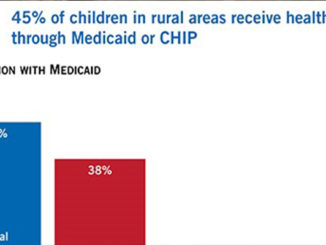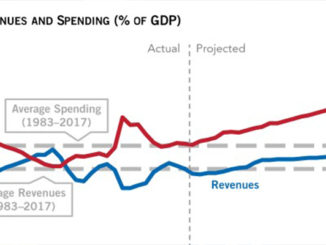
The demise of the American Health Care Act (AHCA) was surely a setback for President Trump and especially for House Speaker Paul Ryan, but Republicans need to dust themselves off, stop the finger pointing, and figure out how to avoid a repeat of Friday’s 11th hour collapse. The simple reality is that legislative efforts to repeal and replace the Affordable Care Act won’t bear fruit unless the administration and Congressional leaders find a way to unite the conservative and moderate wings of the party. They can get there by going straight to the heart of America’s health-care crisis: the lack of a transparent marketplace where providers compete based on price and quality.
Republicans can and should repeal and replace Obamacare’s heavy-handed insurance rules with reforms centered on patients and consumers, but the solution for what really ails American health care isn’t better insurance—it’s competition. Insurers, hospitals, and even pharmacies keep consolidating, using their market power to grow their profit margins and lobby lawmakers to keep competitors at bay with regulations.
State and federal mandates hamstring competition in the name of protecting consumers and providing charity care, but they don’t do either job particularly well. Take state “certificate of need” laws. First implemented in New York in 1964, CON laws went national in 1974, requiring each state to create an agency that would regulate the construction of new health-care facilities or high-tech services. Unless government regulated the supply of health care, the thinking went, hospitals would build excess capacity, resulting in overcharging or unnecessary hospitalizations. The hospitals also argued that barring competitors was necessary to protect charity care for uninsured and indigent patients. If profits for high-margin services were reduced through competition, they said, fewer funds would be available to pay for indigent care. Though the federal mandate for states to regulate the supply of heath care was removed in the 1980s, only 15 states have repealed their CON laws; 35 states still have them on the books today.
Decades of studies suggest that CON laws do more harm than good. In a joint letter from the Federal Trade Commission and Department of Justice to South Carolina’s legislature in January 2016, the agencies recommended that South Carolina repeal its CON law because “CON laws create barriers to entry and expansion, limit consumer choice, and stifle innovation,” and “the evidence to date does not suggest that CON laws have generally succeeded in controlling costs or improving quality.” A 2014 study from the Mercatus Center found that CON laws have no effect on charity care. As the FTC’s acting chair wrote in 2015, “the indigent-care claims [made by hospitals on behalf of CON laws] appear to be little more than an argument of convenience by politically powerful special interests attempting to protect their historical government perquisites.” If policymakers are really interested in supporting care for low-income and uninsured patients, they should simply fund it directly.
Hospital safety records are also deeply disturbing. While estimates vary, studies suggest that hundreds of thousands of patients die in U.S. hospitals every year from medical errors. “In what other industry would such a record be tolerated, let alone defended?” a patient advocate asked. “Would the airline industry and public ever tolerate even a single preventable airline crash?” The answer, of course, is no. The airline industry has a remarkable track record for safety—perhaps because the FAA focuses on safety, not on buying airline tickets for passengers. When it comes to health care, government is not only the regulator but also a massive source of industry revenues and job security.
The Trump administration and Congress should prioritize health-care transparency and competition when they reboot their reform effort. As part of the president’s commitment to repeal two regulations for every new one enacted, the Department of Health and Human Services could launch state Health Care Innovation Zones as part of efforts to reform Medicaid. Within these zones, states and the Centers for Medicaid and Medicare Services (CMS) would agree to waive state and federal regulations that prevent doctors and hospitals from competing head to head based on pricing and outcomes—especially for the most expensive patients with serious chronic illnesses.
This reform would let small and medium-size providers and entrepreneurs redesign and reprice health-care services for consumers and employers, using interoperable health records and cost data to identify high performers—also signaling to the private market where the best performers can be found for a given ailment at a given price. The only safeguards should be that the zones be deficit-neutral to the federal government, and that all providers in the zone be transparent about costs and quality information, which would be available to commercial and academic researchers through a database run by a neutral third party that would safeguard patient privacy.
To accelerate patient access to lifesaving and life-improving medicines, FDA reform should also be a priority. It can take a decade and well over $2 billion to bring a new medicine to market. The vast majority of these medicines fail, expensively, in clinical trials. Conditional approvals based on early-stage evidence of safety and efficacy, followed by collecting data on drugs’ real-world performance, could lower those costs while giving patients and physicians more treatment options.
We can also do a better job using treatments already available—by more broadly sharing cancer-treatment data, for example. Former National Cancer Institute director Vincent DaVita estimates that 100,000 lives could be saved annually just by using the drugs we already have on market as effectively as possible.
Can innovation and competition radically slash the cost of American health care while raising quality? The Indian example is encouraging. Hospitals and clinics there have learned how to deliver world-class cardiovascular care and cataract surgery at a fraction of the price in wealthy Western nations through a relentless focus on costs and efficiency. In the long run, lower costs mean less need for federal and state tax subsidies to help consumers buy care, as every dollar spent on care goes farther.
We already know what we need to do: get out of the way of entrepreneurs and empower consumers with information. Unless we do, we’ll continue to drown innovators and physicians in red tape. With true competition in health-care markets, providers will finally have an incentive to deliver better outcomes at less cost—and if they don’t, they’ll lose out to more nimble entrepreneurs. That’s the way the other 80 percent of the U.S. economy operates. Health care should be no exception.



